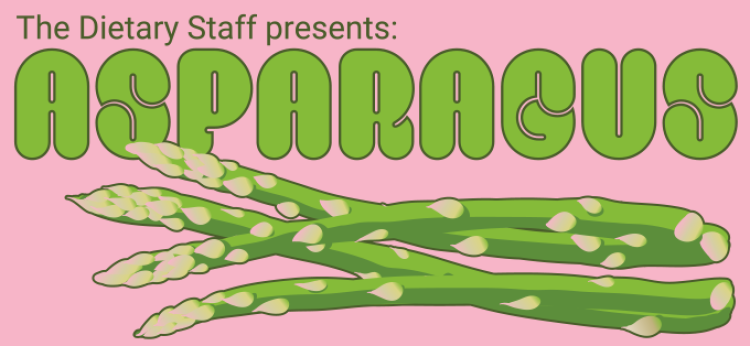
Asparagus is a herbaceous, perennial vegetable. It is part of the Asparagus officinalis family and is native to most of Europe and North America. It is commonly harvested early in the spring, before the spears grow woody.
History
Asparagus has been sought after for medicinal purposes as early as 3000 BC in Egypt. In Greece, it was common to dry asparagus for use through the winter. Romans would freeze the asparagus in the Alps to preserve it. Emperor Augustus liked asparagus so much, he created an “Asparagus Fleet” to harvest and process it for him and later coined the term “faster than cooking asparagus,” referring to its short preparation time. Asparagus also appears in the oldest existing cookbook owned by Apicius between 200-300 AD.
Botanical Facts
Asparagus was originally part of the Lily family, Liliaceae, along with onions and garlic, until the genus was divided. Now, asparagus is part of Asparagaceae. Asparagus is a good companion crop with tomatoes because the tomatoes repel the asparagus beetle and asparagus protects tomatoes from root nematodes.
Spotlight on...
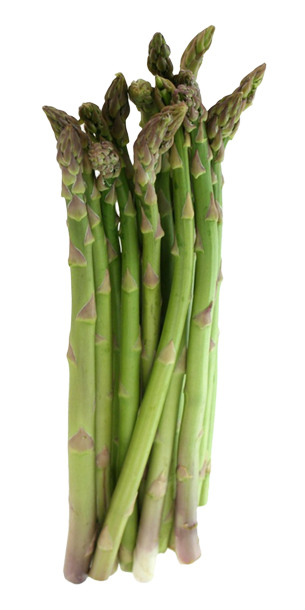
Green Asparagus
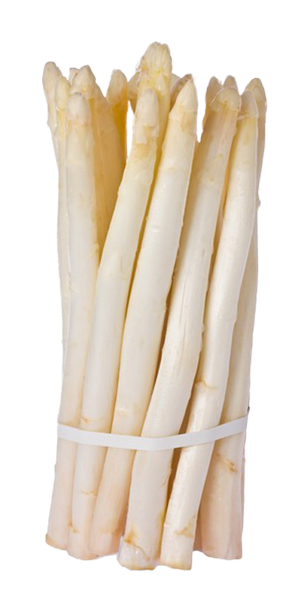
White Asparagus
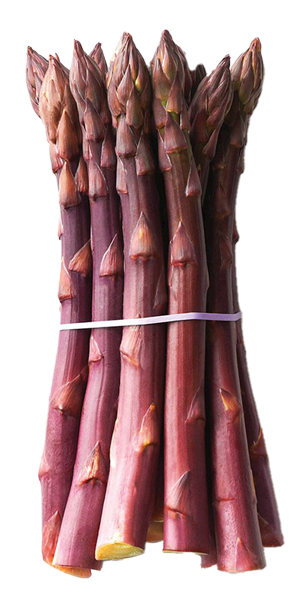
Purple Asparagus
The Life Cycle of Asparagus
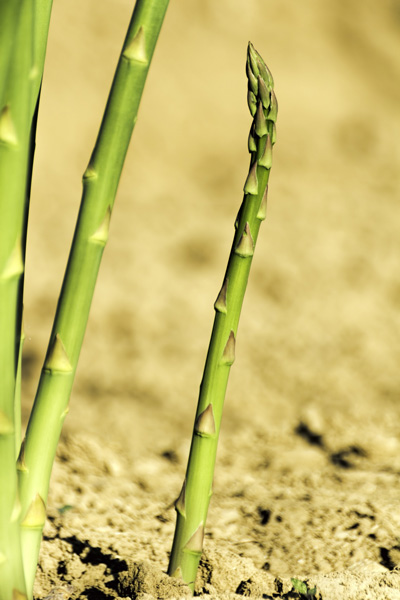
Spears: Peak Harvest
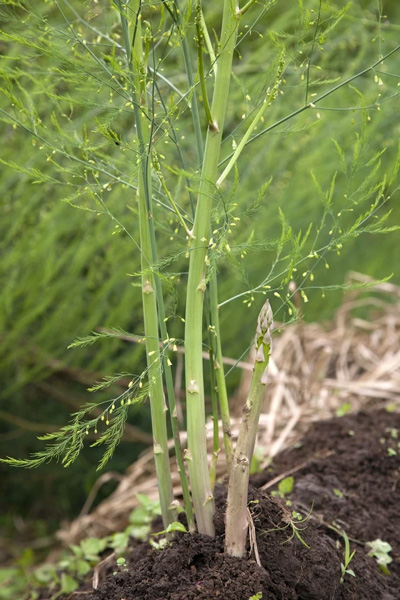
Sprouting: Past Harvest
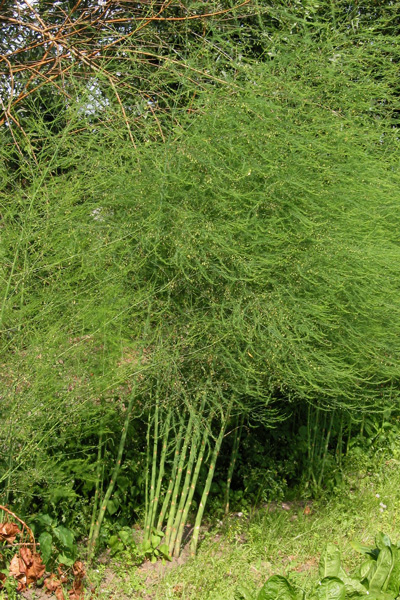
Ferning: Seed
Asparagus is a perennial crop with a short window during which crowns should be harvested to ensure peak freshness and nutrition. During a single season, asparagus can go through 2-3 consecutive cuttings before going to seed or being chopped for the following season.
More Facts
- White and green asparagus are of the same variety. White asparagus is grown by “hilling,” where dirt is piled over it to prevent the process of photosynthesis.
- White asparagus, popular in Western Europe, is considered “white gold” and often called “the royal vegetable.”
- Water used to cook asparagus is sometimes used for face washing because of the uric acid present in the water.
- Asparagus originally evolved in marine habitats.
The United States, European Union, and Japan are the largest producers of asparagus.
Preparing & Cooking Asparagus
- Once harvested, rinse and pat spears dry.
- Trim off the tough ends, either an inch or two from the base, or wherever the asparagus naturally snaps when bent.
- Cut to desired length then blanch, roast, or pan-fry.
- Blanch in about 1 inch of water for 3-5 minutes. Remove from water immediately to avoid further cooking.
- Roast or bake asparagus at 400°F for about 25 minutes, until tender but crisp. Before placing in oven, drizzle spears with olive oil then salt and pepper as desired.
- Asparagus is often served chilled on salads or roasted with olive oil, salt, pepper, cheese, or other herbs as a side dish.
Storage
Asparagus is extremely perishable and should be kept refrigerated after harvest. If kept in moist, cool conditions, asparagus spears can stay fresh for up to 3 weeks. Spears are often stood up in water to ensure moisture.
Nutrition Facts
Asparagus is a good source of Vitamins A, B6, and K, as well as folate, potassium, fiber, and iron. It is also fat free, low in calories, and sodium. Asparagus is also rich in the amino acid asparagine, which supports the nervous system.
Nutrition Facts
Serving Size 5 spears, cooked (93g)
Servings Per Container
Amount Per Serving
Calories 20
Calories from Fat 0
% Daily Value*
Total Fat 0g
0%
Saturated Fat 0g
0%
Trans Fat 0mg
Cholesterol 0mg
0%
Sodium 0mg
0%
Total Carbohydrate 4g
1%
Dietary Fiber 1g
4%
Sugars 0g
Protein 4g
Vitamin A 10%
•
Vitamin C 20%
Calcium 0%
•
Iron 4%
*Percent Daily Values are based on a 2,000 calorie diet. Your daily values may be higher or lower depending on your calorie needs:
Calories:
2,000
2,500
Total Fat
Less than
65g
80g
Saturated Fat
Less than
20g
25g
Cholesterol
Less than
300mg
300mg
Sodium
Less than
2,400mg
2,400mg
Total Carbohydrate
300g
375g
DietaryFiber
25g
30g
Calories per gram:
Fat 9
•
Carbs 4
•
Protein 4
Brought to you by VT FEED and VT Agency of Education. VT FEED is a partnership of Shelburne Farms and NOFA-VT. Funded by a USDA Specialty Crop Block Grant through VT Agency of Agriculture, Food, & Markets.
All FFVP materials available at:
vtfeed.org/feed-resource-library